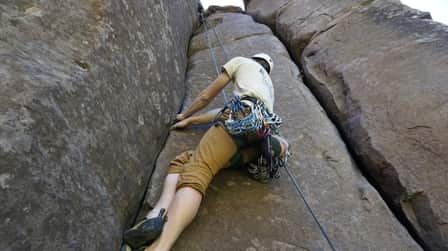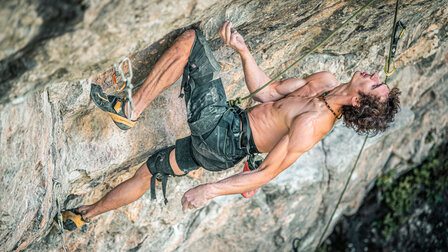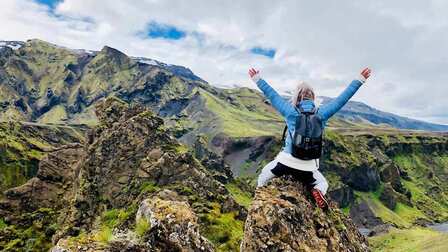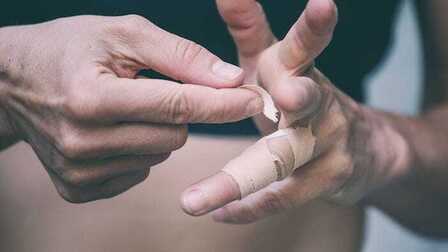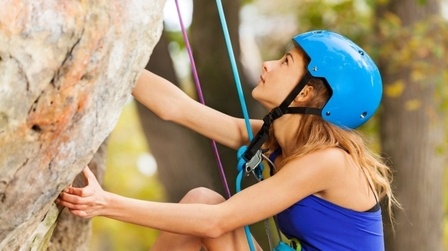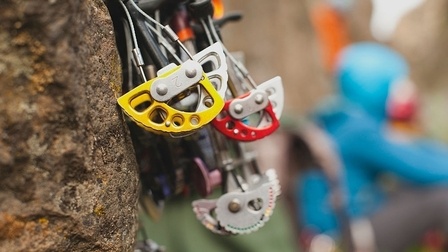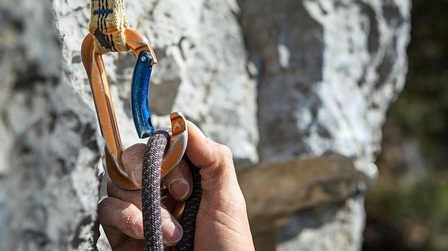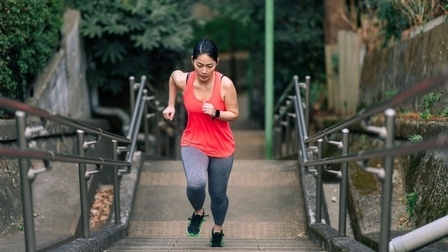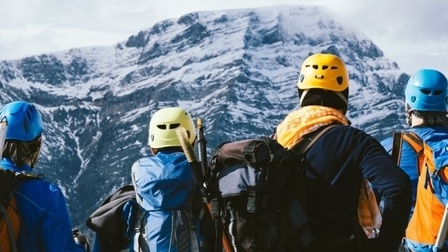What do you think about climbing while pregnant? There will be many of you who think that, when you are pregnant, absolutely do not climb mountains, and exercise vigorously. However, according to research, with a normal pregnancy, the answer is "yes".
The big goals of mountain climbing enthusiasts are to improve, strengthen the body, and avoid or correct injuries. For pregnant women, it's the exact opposite that happens to our bodies. We change body composition dramatically and are expected to have some degree of injury to the core and pelvic floor after pregnancy.
During pregnancy, a healthy woman's normal weight gain is 25-35 pounds. Our core system includes not only our deep abdomen (transverse abdominis) and back (multi muscular) muscles, but also our pelvic floor and diaphragm, which are stretched and weakened by weight gain during pregnancy. At least 66% of women experience a separation of the six pack muscles (six pack abs) by the third trimester of pregnancy.
Disturbed sleep and living habits. After a baby is born, our nutritional needs change again, especially when we breastfeed. If you had a cesarean section, you've also endured 6 weeks of lifting and activity restriction along with significant injury to the abdominal muscles that are used for stability and support.
Therefore, climbing is also one of the activities that you do while pregnant.
To ensure safety, you need to prepare what skills, what should be avoided. Below we provide tips, advice and guidelines for climbing safety for pregnant women.
1. Climbing with a changed body, Listen to your body
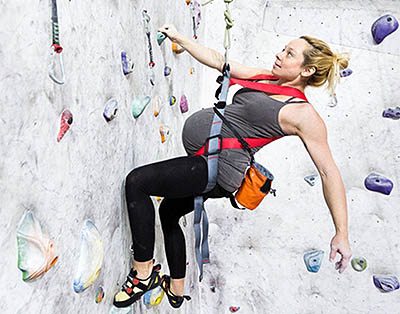
During early pregnancy, morning sickness occurs for most women. For many people, this is probably the worst time of pregnancy. Morning sickness can last throughout the day and for several days in a row. So trying to get out and do something positive is what you should do. You should exercise, run and climb normally for the first few months, to positively change your body and mind.
In addition to feeling nauseous, a noticeable difference in the first few months is the new pain in the round ligament, the pelvic ligament is starting to loosen and prepare for delivery. As a mountaineer, you are used to seeing results, tangible changes. But pregnancy and motherhood will teach me patience. You will become open and honest with your OB-GYN and tell everyone that you are a climber, how you climbed, and what you want to continue doing. Listen to your body during your first pregnancy and reassess once you start to see many changes in your body.
Furthermore, during pregnancy, your body's center of gravity also changes. However, that balance is simply a case of using it or losing it, and by continuing to climb along the way you can adjust and compensate for these gradual changes (although you get 'pushed' further and further away from the wall as the bump gets bigger!)
During pregnancy, circulating levels of the hormone relaxin increase flexibility by softening the structures of the musculoskeletal system (which peaks during the first trimester and before birth). While its main function is to relax pelvic ligaments and aid in labor, elsewhere in the body it tends to increase joint laxity and can cause pregnant women to experience muscle strains and sprains. This is something to keep in mind before flexing your body through strenuous technical moves.
2. Listen in your head
As for climbers, it's always customary to have a risk assessment, and that process is adjusted to include the baby (when you're climbing during pregnancy).
There are many people who think that it is irresponsible for pregnant women to climb the mountain. But for climbers accustomed to risk assessment, that process will be tailored to include babies. In other words, you will find and assess your personal acceptable level of risk. Once the risk is assessed and the climbing tips are mastered, pregnant climbers are happy to continue on safer routes, in their comfort.
3. Type of climbing

Choosing which type of rock climbing to do during pregnancy is a personal decision, but careful consideration should be given to the different levels of risk involved, the potential for falls, and how to minimize this. For example climbing easy circuits on rocks that can go down without jumping down.
If you climb in winter, ice climbing is a pleasant experience, then during pregnancy you should take a winter break / ice climbing due to the frequency with which ice and snow can fall from above, especially if there are any other climbers above you.
4. Route selection
Stick to the slabs and walls, avoid the rocky protrusions, you will reduce stress during the climb. This is important because the rectus abdominis muscle is already stretched during pregnancy due to the growing uterus and two-thirds of pregnant women experience a separation of the abdominal muscles in this area as the baby grows.
In terms of fall risk, you can choose to avoid crosswalks or routes with climbers, even when traveling in groups.
5. Equipment

Most pregnant women who want acacia will want to consider using a full body harness, when the uterus is higher up in the body and the baby is no longer protected by the pelvis. Currently, on the market, to meet everyone's needs, suppliers have designed many types of belts, you can buy a special pregnancy belt with padding (There is a less comfortable type of belt roof but cheaper). You should also prepare yourself with comfortable shoes because about half of pregnant women experience edema, which causes feet and ankles to swell.
Make sure you bring plenty of snacks and extra water. It is especially important to drink enough water and to seek shade from the heat. And of course, during the first time you are pregnant, you should climb during the day, it will be a lot easier than in the afternoon or evening.
6. Safety Considerations

The first priority during pregnancy is always to keep the baby and mother safe. To start the climbing process, here are two important rules:
- The impact of a fall will have extremely serious consequences. A strong impact with boulders or a long fall can lead to internal damage and should be avoided at all costs. So always use a full body harness to avoid pressure on the abdomen
- Avoid situations that could lead to injury to your abdomen - this includes, not climbing ropes or not climbing boulders.
- Avoid letting your heart rate rise for a long time because a newborn's heart rate reflects your heart rate.
- Avoid stressful situations.
- During the climb will arise things that are out of your control, big threats like rock slides. It is necessary to assess the risk and decide if you really want to be there.
Mothers need to take extra care to prevent injury to themselves by exhaling on exertion to avoid excessive pressure building up in their abdomen or pelvic floor that can lead to spermatosis and fecal incontinence. This is also a great time to focus on leading with your feet (or climbing on your feet), because hanging from your arms without leg support can cause your stomach to sink. If you're not managing your abdominal pressure well, you can increase your risk of a large diastasis recti, which can make postpartum recovery much more difficult.
Conclusion
As with any exercise during pregnancy, you should also consider it. If you know the tips, skills, and prepare well for the climbing process, then climbing during pregnancy is not a concern. Moreover, it also helps to improve the health of mother and baby. Hope these tips for climbing pregnant will help you.


